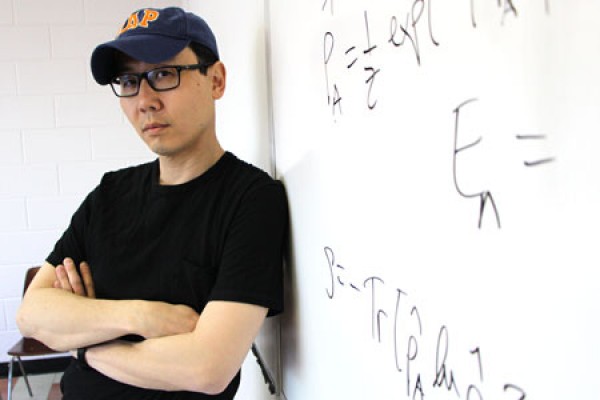 Eugene Kim has developed a formula to measure entanglement - a fundamental property of quantum mechanics - in superconductors.
Eugene Kim has developed a formula to measure entanglement - a fundamental property of quantum mechanics - in superconductors.
Quantum computers have the potential to be significantly more powerful than today’s fastest silicon-based processors, and a central ingredient behind their power is a fundamental property of quantum mechanics known as “entanglement”.
Now a UWindsor physics professor has developed a mathematical formalism for characterizing entanglement in an important class of materials, marking an important step in understanding these systems and a potential contribution toward quantum computing.
Eugene Kim has figured out an efficient method to characterize this fundamental property in superconductors, and it’s described in an article recently featured in the academic journal IOPSelect.
“It’s arguably the simplest method to compute measures of entanglement in superconductors,” he said. “The central result is one of the cleanest I’ve ever obtained.”
Entanglement, Dr. Kim said, is understood to be the main characteristic trait of quantum mechanics. Simply described, it’s a phenomenon that occurs when particles interact so that the state of each particle cannot be described independently. Objects become intimately linked, so what happens to one actually determines the fate of the other.
“Two objects that are entangled can be pulled even light years apart and they still behave like one entity,” Kim explained. “Entanglement is the reason behind exotic quantum phenomena and it’s what gives rise to superconductivity. It’s due to particles being entangled. Superconductivity is a macroscopic consequence of entanglement.”
Superconductivity, for the uninitiated, is a phenomenon of zero electrical resistance and the expulsion of magnetic fields that occurs in metals when they are cooled below a critical temperature.
“It occurs when the electrons in a metal become entangled in a particular way,” Kim explained. “As a consequence of this entanglement, you can have an electric current flowing through a superconductor that persists indefinitely with no power source.”
There are a number of promising applications for superconductors, including levitation and propulsion of maglev trains, high-performance smart grids, energy storage devices, and also for quantum computer architecture.
Kim said he had been bouncing around ideas in his head about how to efficiently compute measures of entanglement in superconductors for some time, and the solution actually came to him while teaching a first-year physics class.
“It was in the middle of the term that this occurred to me,” he said. “It was really a eureka moment.”
Kim said the approach he developed could be applied to characterize entanglement in systems of utility for quantum computing. He says the next step is to apply the method to develop a means of actually measuring entanglement in a laboratory.
